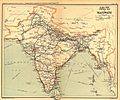Darbhanga – The Abode of Maharajas
Decked with majestic remains of its glorious past, Darbhanga transports you back in time with the numerous elegant palaces and monuments scattered about the cityscape. The phenomenal tales of its history combine with mythological legends and folklore to give it a mystic allure. Having witnessed the reigns of many mighty conquerors and monarchs, the city has been influenced by as many cultures. Interweaving these diverse traditions, Darbhanga, lures travelers with its vivid and colorful appearance.
Nestled at the very heart of the Mithilanchal region, Darbhanga is often known as the ‘Cultural Capital of Bihar’. The title is indeed fitting, as it is one of the oldest cities in the state, and boasts of a rich legacy of art and music. The city’s most remarkable rulers belonged to the Raj Darbhanga family, who are responsible for much of its rich heritage. The name Darbhanga is derived from the word ‘Dwarbhanga’ meaning ‘Broken Gates’.
Delving into Darbhanga
Boasting of an impressive historical and cultural heritage, Darbhanga has much to offer travelers. History lovers will particularly enjoy strolling about the town and exploring its quaint monuments and museums. These popular sites give you valuable insights into the city’s regal past. The several beautiful ponds spread across the city add a natural touch to its appeal and are ideal spots for spending some leisure time.
Spiritual travelers will find much to quench their religious quests in Darbhanga. The city boasts of several shrines and sacred sites dedicated to various faiths. The temples, mosques, and churches are worth visiting for their religious and historical significance. A great time to visit these places of worship is during their respective festivals. You can witness performances of the traditional Dhrupad music, and folk dance and drama styles of Nautanki Nach and Madhushrawani on such occasions.
Darbhanga, with its lively local markets, is an equally delightful shopping destination. Places like the Tower Chowk Market, Tara Market, Pahee Market, and Masraf Bazaar, among others, are ideal not only for shopping but also for observing the local culture. You can shop for several souvenirs of traditional Mithila artworks such as the colorful Madhubani paintings and Sikki Mauni artifacts. You can also visit the street-side sweet shops to taste the local delicacies like Makhane Ki Kheer and Thekua.
Moving in Darbhanga
Traveling within the city is facilitated by several means of local transport in Darbhanga. Auto-rickshaws are the most commonly used means of transport for traveling from one point to another in within the city. The shared-auto system provides a cost-effective way of moving around in Darbhanga. Cycle-rickshaws are also a common mode of local transport here. They are especially useful for traveling to shorter distances or through narrow lanes. Private cars and taxis can be booked for a comfortable traveling in and around Darbhanga.
Helpful Tips for Travelers
- Women are advised to dress in traditional or modest clothing to avoid uncomfortable gazes in public places
- Avoid visiting the city during summers as the extremely hot weather is unsuitable for sightseeing and other tourist activities
How to Reach Darbhanga
You can reach Darbhanga through train. Darbhanga Jn is one of the most popular train stations in Darbhanga. On an average about 55 trains pass through Darbhanga on a daily basis. Samastipur to Darbhanga, Barauni to Darbhanga, Laheria Sarai to Darbhanga are some of the most popular routes to Darbhanga with 81, 55, 52 trains weekly respectively.
By road Darbhanga is surrounded by Madhubani, Samastipur, Muzaffarpur which are 17.88 km, 20.22 km, 30.93 km away respectively. These places are ideal spots for people to plan their short weekend break.




